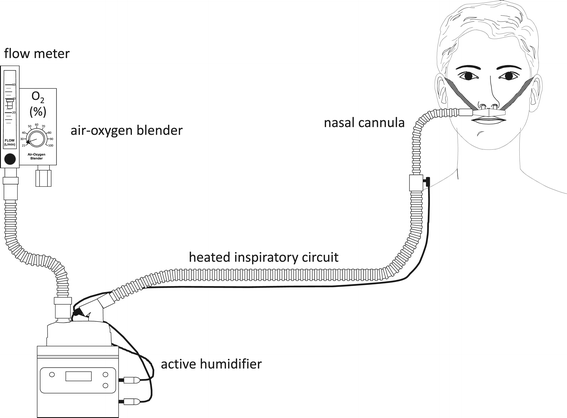High-flow nasal cannula oxygen therapy in adults
- PMID: 25866645
- PMCID: PMC4393594
- DOI: 10.1186/s40560-015-0084-5
High-flow nasal cannula oxygen therapy in adults
Abstract
High-flow nasal cannula (HFNC) oxygen therapy comprises an air/oxygen blender, an active humidifier, a single heated circuit, and a nasal cannula. It delivers adequately heated and humidified medical gas at up to 60 L/min of flow and is considered to have a number of physiological effects: reduction of anatomical dead space, PEEP effect, constant fraction of inspired oxygen, and good humidification. While there have been no big randomized clinical trials, it has been gaining attention as an innovative respiratory support for critically ill patients. Most of the available data has been published in the neonatal field. Evidence with critically ill adults are poor; however, physicians apply it to a variety of patients with diverse underlying diseases: hypoxemic respiratory failure, acute exacerbation of chronic obstructive pulmonary disease, post-extubation, pre-intubation oxygenation, sleep apnea, acute heart failure, patients with do-not-intubate order, and so on. Many published reports suggest that HFNC decreases breathing frequency and work of breathing and reduces needs of escalation of respiratory support in patients with diverse underlying diseases. Some important issues remain to be resolved, such as its indication, timing of starting and stopping HFNC, and escalating treatment. Despite these issues, HFNC oxygen therapy is an innovative and effective modality for the early treatment of adults with respiratory failure with diverse underlying diseases.
Keywords: Anatomical dead space; Clinical trials; Oxygen therapy; PEEP effect; Physiological effects.
Figures

References
Publication types
LinkOut - more resources
Full Text Sources
Other Literature Sources
Medical
Molecular Biology Databases

